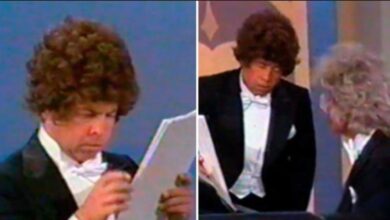Wilson Pickett’s “In the Midnight Hour” Sparks a Soul Revolution in 1965
When Wilson Pickett unleashed “In the Midnight Hour” in 1965, he delivered more than just a hit single—he ignited a new era for soul music, blending raw emotion with tight, irresistible grooves. Released through Atlantic Records, the song didn’t just climb to No. 1 on the R&B charts and break into the Top 25 of the Billboard Hot 100—it set a new standard for what Southern soul could sound like, laying the groundwork for countless artists who would follow in its wake.
Wilson Pickett’s journey to stardom was a winding, hard-fought road. Born in Prattville, Alabama, and later moving to Detroit, Pickett first honed his craft singing in gospel groups before shifting toward secular music. His tenure with The Falcons, especially his lead vocal on “I Found a Love,” revealed the fire in his voice and caught the attention of major labels. With a blend of gospel-trained passion and street-tough delivery, Pickett stood out even among the crowded, competitive Detroit scene.
The story behind “In the Midnight Hour” is nearly as legendary as the song itself. Co-written by Pickett and Steve Cropper of Booker T. & the M.G.’s, the track was born during a brainstorming session at the Lorraine Motel in Memphis—the same motel where Martin Luther King Jr. would later be assassinated. According to Cropper, Pickett suggested the phrase “in the midnight hour” after recalling a favorite phrase his mother used. Together, they built the song around the idea of love after dark, capturing both vulnerability and unfiltered passion.
Recording at Stax Studios in Memphis under the guidance of Atlantic Records’ Jerry Wexler, the team crafted a track that married grit with polish. Steve Cropper’s sharp, chopping guitar licks intertwined with Donald “Duck” Dunn’s solid bass lines, while Al Jackson Jr.’s drums laid down a “delayed backbeat”—a new rhythmic feel Wexler had observed among dancers and suggested they emulate. Pickett’s vocal performance was nothing short of incendiary, filled with longing, urgency, and a magnetism that could not be denied.
Upon release, “In the Midnight Hour” was an instant sensation. It shot to No. 1 on the R&B charts and reached No. 21 on the Billboard Hot 100, firmly establishing Pickett as a solo star. Critics praised the song’s emotional intensity and innovative rhythm, while audiences couldn’t resist its danceable groove. For Atlantic Records, it was a validation of their decision to invest in the grittier side of soul, as opposed to the smoother styles coming out of Motown.
Culturally, “In the Midnight Hour” arrived at a pivotal moment. America was grappling with deep social changes, and Pickett’s fiery, unapologetic delivery resonated with a generation seeking authenticity. The song helped bridge the gap between gospel-influenced soul and mainstream pop, introducing a rawness that would come to define the Southern soul movement. It also played a role in further integrating American music, finding success with black and white audiences alike.
The success of “In the Midnight Hour” catapulted Wilson Pickett to new heights. It led to a string of follow-up hits like “634-5789 (Soulsville, U.S.A.)” and “Land of 1000 Dances,” cementing his status as one of soul’s brightest stars. Pickett became a headlining act, touring nationally and internationally, and his performances were characterized by an unmatched ferocity that thrilled crowds and solidified his reputation as one of the genre’s most dynamic frontmen.
Beyond his own career, the song influenced a generation of musicians. It helped shape the future sound of artists like Otis Redding and Aretha Franklin, both of whom blended gospel fervor with soul swagger in ways that mirrored Pickett’s approach. The delayed backbeat rhythm introduced in “In the Midnight Hour” also crept into countless records across R&B, pop, and even early rock and roll.
Cover versions of “In the Midnight Hour” are plentiful and diverse. Artists as varied as Bruce Springsteen, The Jam, and Roxy Music have paid tribute to the song, each offering their interpretation while keeping the heart of Pickett’s original intact. Its universal appeal—an aching cry for love delivered with irresistible rhythm—makes it adaptable across styles and eras, further cementing its place as a true classic.
At the time of its release, Pickett’s star was rising amid a backdrop of cultural and political upheaval. The Civil Rights Movement was reaching its most intense years, and soul music served as both a soundtrack and an expression of black identity and pride. Pickett’s bold, uncompromising style mirrored the spirit of the times, giving voice to emotions that many were struggling to articulate.
Over the decades, “In the Midnight Hour” has remained a fixture on classic soul playlists, wedding receptions, and movie soundtracks. It has been honored by the Grammy Hall of Fame and ranked by Rolling Stone among the greatest songs of all time. Its continued relevance speaks to its timeless fusion of longing, groove, and explosive energy.
The recording techniques pioneered during the session—particularly the rhythmic innovation—would ripple through future productions. The “delayed backbeat” became a staple not only in soul but also in funk, influencing the evolution of American popular music. Producers realized that feeling mattered as much as precision, a lesson that countless records would reflect in the years that followed.
Though Wilson Pickett would go on to amass an impressive catalog of hits, “In the Midnight Hour” remains his signature song—a raw, unfiltered expression of soul that continues to inspire artists and electrify audiences worldwide. Pickett was later inducted into the Rock and Roll Hall of Fame in 1991, with this song cited as a foundational piece of his enduring legacy.
Ultimately, “In the Midnight Hour” endures because it captures a universal human experience: the yearning for connection, the hunger for love, and the timeless allure of the night. Wilson Pickett didn’t just sing those feelings—he lived them, and in doing so, he gave the world a song that, even decades later, still sets hearts racing and feet moving. In the midnight hour, and beyond, his voice continues to call out—and the world is still listening.





